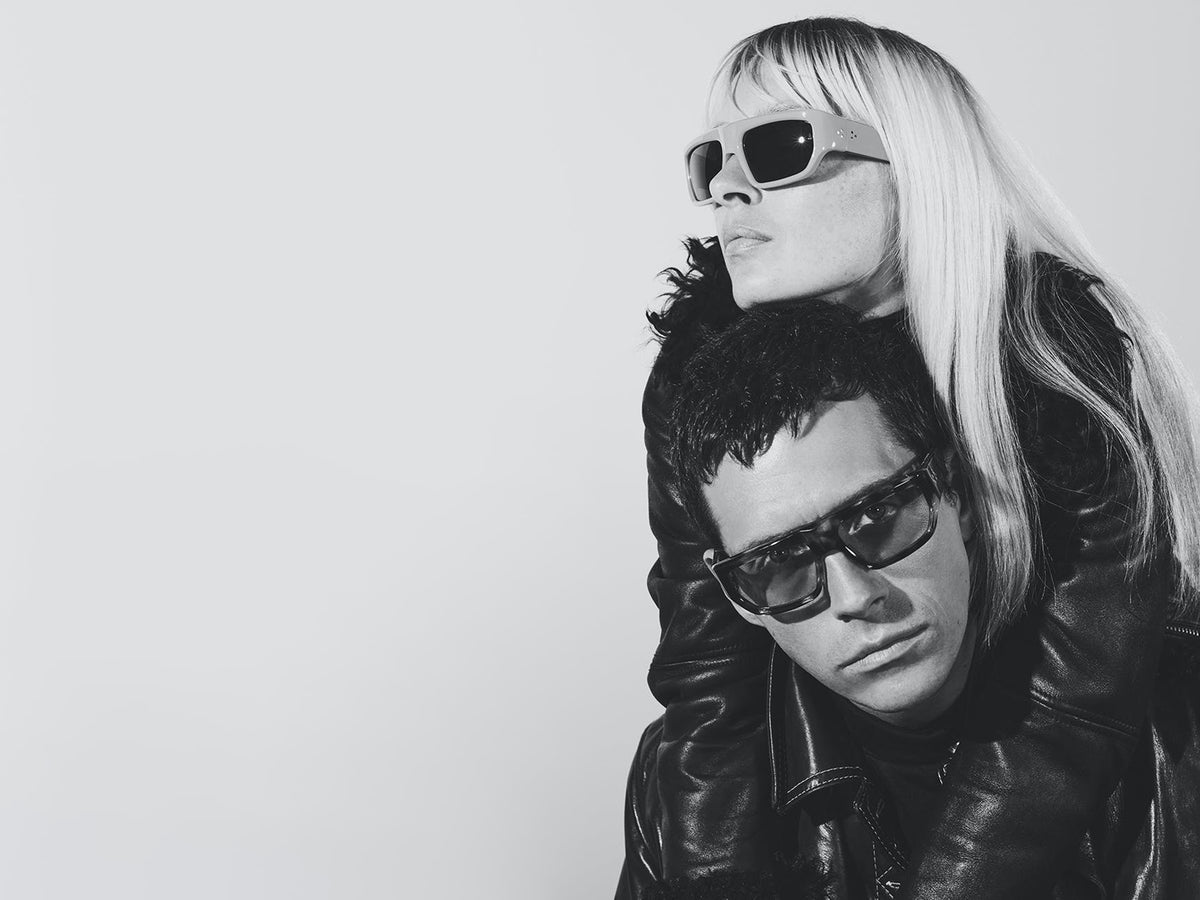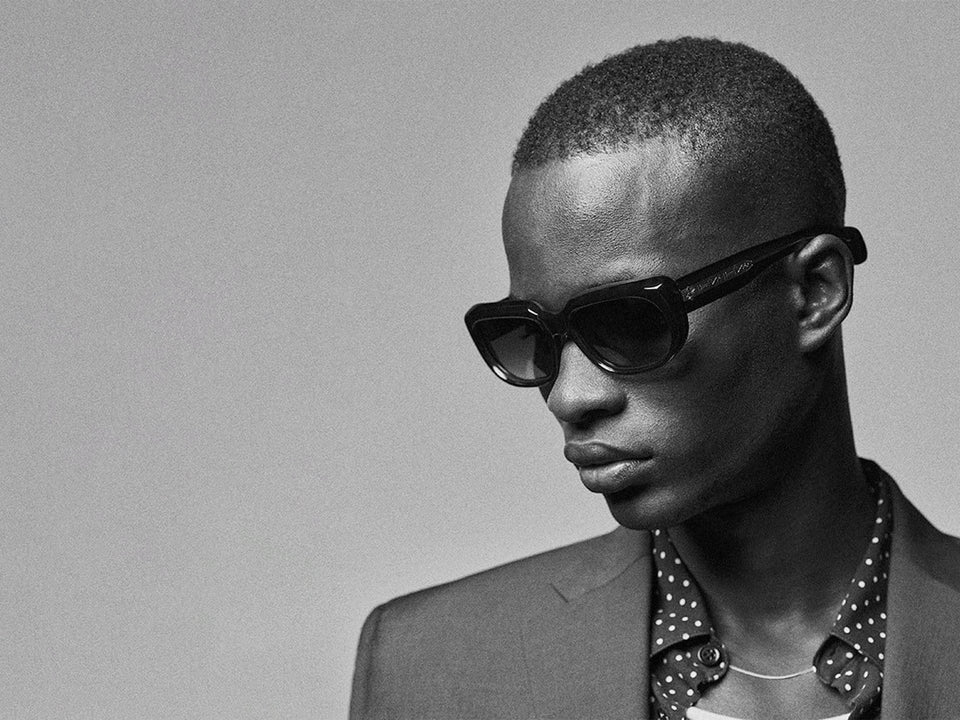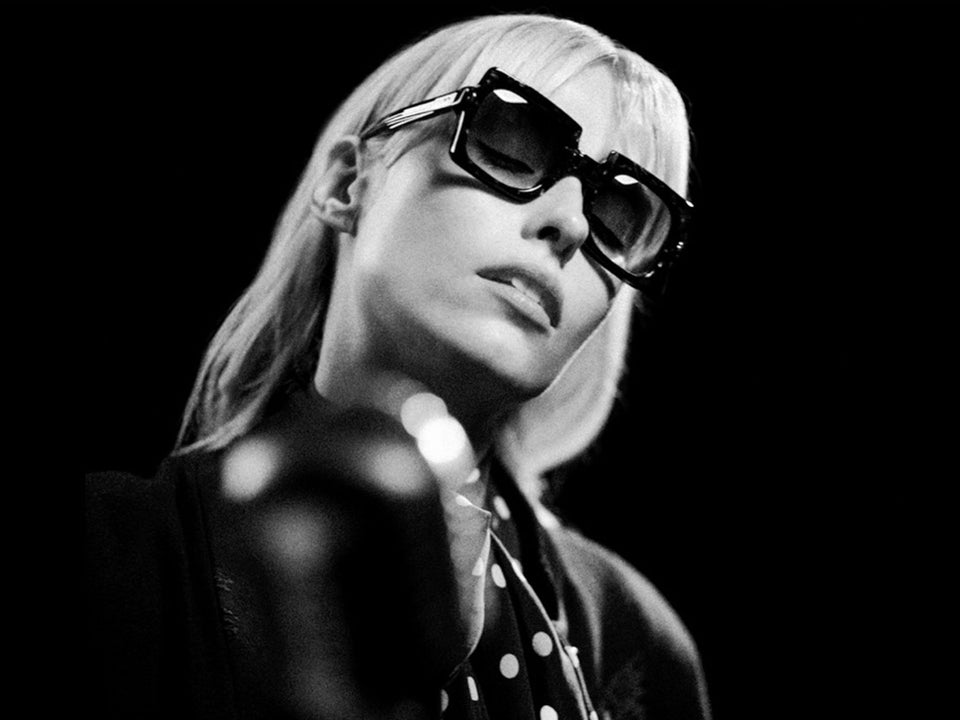Not many bands wore sunglasses quite as well as the Velvet Underground. John Cale’s black wayfarers… Moe Tucker’s elliptical specs… and that’s before we mention Andy Warhol and Nico… but perhaps the most boundary-pushing glasses-wearer of the bunch was the late, great Lou Reed.
Even in his pre-glasses-wearing early years, Reed was already well on the way to becoming an eyewear icon—naming his first band ‘The Shades’. Although early photos of him playing show a relatively straight-laced teenager, dressed in button-down shirts and cable-knit sweaters, the classic Ivy League uniform of a student on the East Coast, he was already renowned for his rebellious nature—kicked out of military training after putting a gun to his commanding officer’s head.
Like Warhol, who spent the 50s doodling away as an advertising illustrator, Reed’s artistic talents were first harnessed in a very commercial setting, employed as a staff writer for Pickwick Records, a label who specialized in quickly-made rehashes of popular tracks. Working at an industrial rate, he’d recreate the sounds and style of whatever was selling in the label’s hope of capitalising on the trend of the day—from upbeat surf songs to tragic motorcycle melodramas.
Meanwhile, he was writing his own stuff—songs like ‘Heroin’ which combined his obvious knack for songwriting and melody with a dark edge Pickwick wouldn’t go near. Luckily for Reed, John Cale (a musician hired by the label to play in the carousel of ever-shifting bands invented to sing Pickwick’s stabs at the hit parade) did like ‘em, and after a few name-changes and line-up shiftarounds, the Velvet Underground was born.
With a harsh, monochromatic take on psychedelia—a million miles from the upbeat flower power of California, the Velvet Underground had a stark, cold sound that was completely their own—as Jonathan Richman put it, “Like the heat’s turned off and you can’t pay the bill.”
This agitated, ‘up-tight’ sound was echoed in their style—no kaftans or bandanas here—just a stripped-back ensemble of drainpipe jeans, engineer’s boots, Breton-striped t-shirts, turtlenecks and blacked-out sunglasses. The band didn’t just write about hustlers and drug pushers, they looked like ‘em.
In a group of bonafide, eyewear icons—Reed managed to stand out with the help of a particularly potent pair of wide-lended wraparound shades with suitably strange origins. As with Liam Gallagher and his round spectacles, there’s a small but incredibly dedicated bunch of people out there who have been trying to work out what glasses Reed was wearing for the early black-and-white promo shots of the band—but the answer is maybe slightly unexpected.
“I wear them so I don't have to see the audience!"
Whilst some think the band’s relative squalor at that time point to dollar store shades, and others argue the case for protective motorsports gigs, the strange truth is that they were borrowed from his mum, and were in fact medical glasses—originally given to her by a doctor to help ease her recovery from cataract surgery.
Beyond merely looking good, these shades served a purpose, protecting Reed’s eyes as his band were bombarded with bright strobes and Andy Warhol’s 16mm films during their landmark Exploding Plastic Inevitable multimedia tour. What’s more, they blocked out any distractions, and when a music journalist asked Reed why he insisted on playing in sunglasses, he replied, “I wear them so I don't have to see the audience!"
After leaving the Velvet Underground, Reed’s penchant for standout shades didn’t diminish. Whilst some musicians undergo a drastic reinvention after going solo, he doubled-down on the NYC street tough look he’d been cultivating in the VU years, meaning more leather jackets and more dark sunglasses.
By the 90s Reed’s dedication to sun-shielding spectacles was really paying off. Not only did he appear in 16-bit form as an undefeatable boss who zapped players with his signature shades in an unreleased, critically-panned Sega game called Penn & Teller's Smoke and Mirrors (this is NOT a joke, look it up), but he also had a small role as a character known as ‘the Man in the Strange Glasses’ in Blue in the Face, the improvised sequel to Wayne Wang’s much-overlooked masterpiece of mid-90s independent cinema, Smoke.
The role saw Reed basically playing himself, stood at a shop counter sharing his wisdom on such subjects as smoking and Sweden, but perhaps the most illuminating part is where he explains how he wants to get into “eyeglass frame manufacturing” after coming up with a unique design he calls ‘Lou’s Views’.
This wasn’t fiction—and Reed did actually get a special pair of sunglasses made by Italian designer Davide de Blasio which would flip up, out the way, when he wanted to read or use binoculars, although as far as we know Lou’s Views sadly never made it to mass production.
From post-surgery safety shades to custom-made reading specs—Lou wasn’t just a mere glasses wearer, but also somewhat of an underappreciated eyewear pioneer—seldom settling for what was on the shelf. Oh yeah, and he did look pretty cool, which is probably why nearly 60 years after nabbing his mum’s glasses—Jacques Marie Mage have remade his trademark shades with the level of quality the Los Angeles brand is famous for. No cataract surgery needed…


